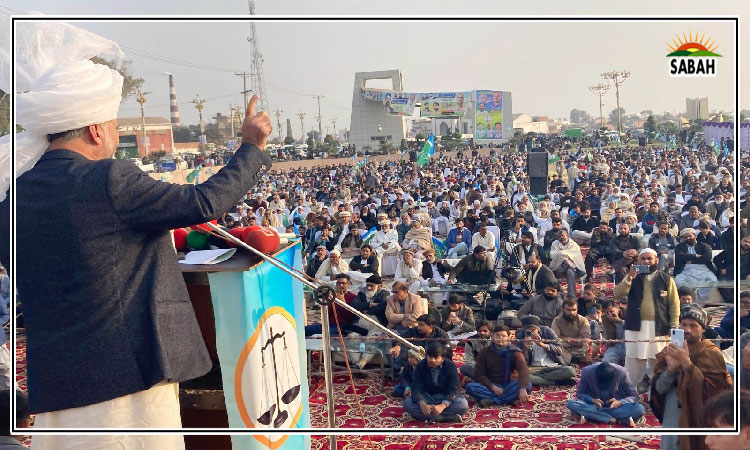For our children…Fauzia Waqar
Most children in Pakistan continue to suffer from nutritional anaemia, particularly iron deficiency. There has been little improvement over the years to deal with the issue. This widespread malnutrition poses a significant threat to childrens physical and mental development, as well as national productivity.
Data from the National Nutrition Survey of Pakistan reveals that nearly half of under-five children (49.1 per cent) suffer from iron deficiency anaemia. Additionally, a majority of Pakistani school children do not meet recommended intakes for essential micronutrients such as calcium, iron, zinc, and vitamin A.
Deficiencies in vitamins B and C also affect a significant proportion of children, while inadequate protein intake and excessive fat and carbohydrate consumption contribute to nutritional imbalance.
Malnutrition has far-reaching consequences beyond economics, including impaired growth, frequent illness, fatigue, and reduced cognitive ability. These conditions not only lead to school absences but also hinder childrens long-term prospects for a successful future.
One of the primary consequences of malnutrition is impaired growth. When children lack adequate nutrition especially iron their bodies cannot grow and develop properly. This can result in stunted growth, meaning they are shorter than their same-age peers. Stunting not only affects their physical appearance but also hinders their overall development and can lead to long-term health problems.
Lack of iron also has a detrimental impact on cognitive ability. Adequate nutrition is vital for brain development and functioning. When children are iron deficient, their cognitive abilities are compromised, affecting their memory, attention span, problem-solving skills, and overall academic performance. This can lead to learning difficulties, low education attainment, and reduced intellectual potential.
Beyond the severe health implications, there is a substantial economic burden resulting from micronutrient deficiencies. A health economics study by Aga Khan University estimates an annual loss of approximately $3 billion, equivalent to 1.33 per cent of the GDP, with direct medical costs for children aged 6-23 months estimated at $19 million. Also, the school age children health and nutrition survey (SCANS) conducted in 2020 in the provinces of Sindh and Punjab reveals a distressing reality that over 90 per cent of children in these regions have inadequate iron intake in their diets. This alarming statistic underscores the persistent and widespread issue of malnutrition and iron deficiency among Pakistani children, particularly in these two provinces.
Immediate action is needed to address this crisis. Ensuring children have access to good sources of iron is crucial. One effective approach to combat iron deficiency and malnutrition among early childhood populations is the use of fortified complementary food.
Complementary foods are introduced when infants transition from exclusive breastfeeding to solid foods. Fortified complementary foods are specifically formulated to provide a comprehensive array of essential nutrients, including iron, to meet the nutritional needs of growing children.
Another example is encouraging the use of fortified nutrition solutions among school going children that are specifically designed to bridge the nutrient gap and can help ensure that young children receive adequate iron and other vital micronutrients during this critical stage of development.
An exemplary success story of using fortified dairy nutrition solutions is the national school feeding programme in Brazil, which has been recognized internationally for its effectiveness in improving nutrition, educational outcomes, and social inclusion. It reaches over 40 million students in public schools and provides them with fortified milk. By addressing malnutrition and food insecurity, the programme has contributed to increased school enrolment, attendance, and academic performance among participating children
Moreover, in line with worldwide initiatives to improve food nutrition, Massey University in New Zealand has pioneered a ground-breaking iron source that offers three times higher absorption in the body than conventional options. Such advancements offer significant potential in tackling iron deficiency and combating malnutrition on a large scale.
The continuous low nutrition indicators from 1977 to 2018 demonstrate the lack of seriousness successive governments have shown toward this issue. There has been a lack of focus and fulfilment of promises regarding addressing malnutrition, despite its inclusion in political manifestos during election campaigns. Given the current stage of malnourishment in Pakistan, urgent action is needed, especially concerning iron-deficient anaemia.
The government should prioritize addressing this issue on an emergency basis, starting and scaling various nutrient-sensitive and specific programmes like food fortification, especially for infants and children. The possibility of food fortification should be explored as it can lead to rapid improvements in nutritional status, particularly if targeted at the right age.
Brazils success story in addressing iron deficiency through fortified food interventions during early development stages should serve as an inspiration. The Global Fortification Data Exchange (GFDx) also emphasizes the importance of food fortification interventions, with the majority of countries working to overcome malnutrition through mandated interventions.
The urgent need to address malnutrition and iron deficiency in Pakistani children cannot be overstated. Prioritizing the promotion of nutritional solutions, including food fortification, is essential to ensure adequate nutrient intake for childrens development. By implementing sustainable long-term approaches and prioritizing the wellbeing of future generations, Pakistan can strive towards a healthier and more prosperous future.
The government must take immediate and comprehensive action, focusing on preventive measures and targeted programs to break the cycle of malnutrition and ensure a brighter future for the nation.
Courtesy The News












